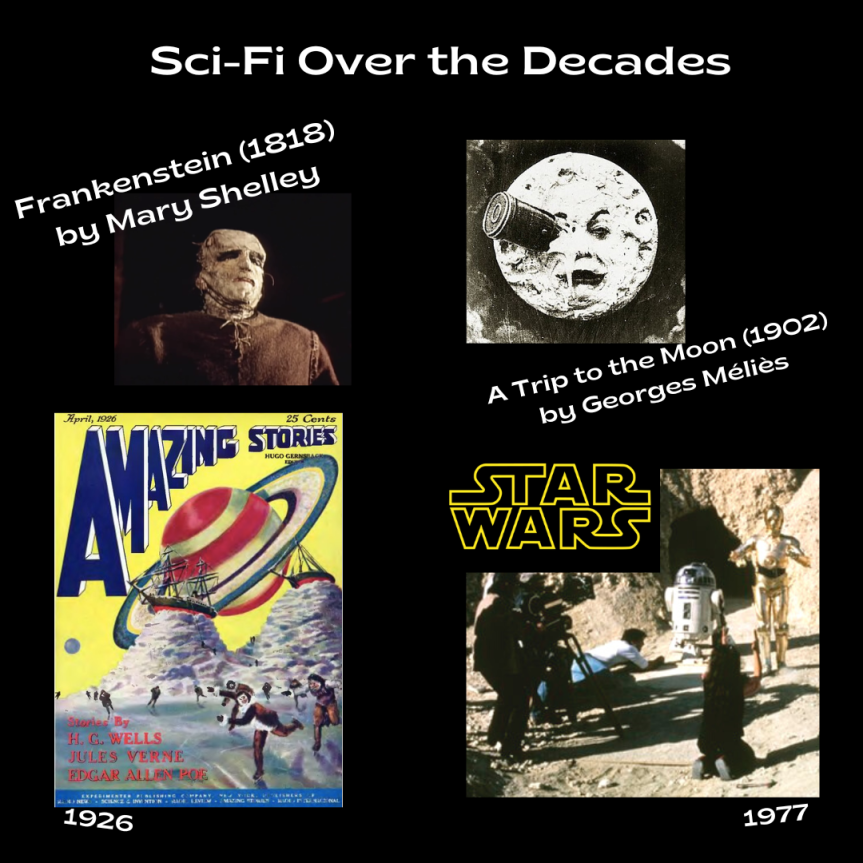Science fiction as a genre has evolved and expanded over the decades, inviting innovative ideas from forward-thinking minds. Avid fans of the genre and its subgenres (some say there are over 30 subgenres!) probably can’t recall a time before there was an entire section in bookstores or online shopping platforms dedicated to science fiction. The genre is not the oldest (poetry claims that distinction) and its evolution is a stunning example of what human ingenuity can accomplish through a combination of imagination and a foundation of science.
Earliest Records of Science Fiction
Unsurprisingly, fiction aficionados do not quite agree on when Sci-Fi as a genre began. Many posit that it was during the 2nd century when Lucian of Samosata penned A True Story, the book that astounded readers with its descriptions of aliens, travel beyond earth, and war among the planets. Several genres in addition to science fiction have attempted to lay claim to this work and its accolades as belonging within their genre. This book, and many others up through the 13th century, do seem to contain themes and elements of Sci-Fi but do they have enough to qualify them fully? The debate continues…
Let’s look at the opinion of astronomer and scientist Carl Sagan. His belief was Somnium by Johannes Kepler is the first true Sci-Fi book. He may be right. After all, within those ancient pages the author describes what it could be like to view Earth from a vantage point on the Moon long before Neil Armstrong set foot upon its regolith-covered surface. Other early contenders include a personal favorite, Mary Shelley’s Frankenstein as well as Jules Verne’s epic Twenty Thousand Leagues Under the Sea. With a genre whose stories are so rich with possibility and so embracing of the unknown it stands to reason that each of these and many more have directly impacted, shaped, and built the incredible genre that we know and love today.
How Sci-Fi Has Changed
The 1900s saw a huge push toward defining the genre and introducing stellar, new concepts to readers of literature. When Hugo Gernsback published the first American Sci-Fi magazine in 1926 called Amazing Stories, he unwittingly started a further boom for the genre as he put incredible works of fiction and art in the hands of thousands of people each month. One author in particular, E. E. Doc Smith with Lee Hawkins, is credited for writing the first notable space opera, The Skylark of Space, which was put in the magazine. A comic strip celebrating Sci-Fi was also born from the magazine as Philip Francis Nowlan introduced the nation to Buck Rogers with Armageddon 2419. Just over a decade later in 1937 a new editor took over a competing science fiction magazine called Astounding Science Fiction and ushered in what fans call the “Golden Age of Science Fiction.” Editor John Campbell focused on content that centered on real, scientific progress and advancements in technology. As a result, the genre blossomed as readers were both in awe of the advancements of the day as well as excited by the fictional elements of each story.
In the 1940s a Hugo Award was given to author Isaac Asimov for his book series entitled Foundation. The story presented the idea of galactic empires, a novel concept in the day. Throughout the 1950s Americans stayed riveted to new ideas including interstellar communities, human evolution of the future, military science fiction, and much more. The 1960s and 1970s saw further advancements in technology, prompting authors to write about themes that stretched the limits of our understanding at that time. Things like human psychology, physical and mental abilities of the human body and mind, and questions about concepts such as gender, feminism, and social constructs played into stories heavily during this time.
Films’ Influence
The onset of film opened an entirely new way for humans to see and interpret the world around them. One of the earliest known recordings that could be labeled as science fiction is the iconic silent film A Trip to the Moon directed by Georges Méliès in 1902. It was shot with a meager budget of 10,000 francs and was only 9 minutes long. A recent film entitled Hugo tells the true-to-life tale of the director and offers a glimpse into his creative mind. By 1927 a full-length science fiction film called Metropolis failed at the box office but has succeeded in the eyes of modern filmmakers for its innovative science fiction concepts. Fast forward to 1968 when 2001: A Space Odyssey and the original Planet of the Apes both came out and it’s easy to see how Sci-Fi enjoyed a burst of popularity as it garnered new fans while enchanting fans of old. The door was wide open for another quality, successful film when in 1977 George Lucas released what we know today as Star Wars: Episode IV – A New Hope. This, of course, sparked a global obsession with the series and expanded the reach of science fiction.
Science Fiction Today
From its humble beginnings, the genre has risen to include some of the bigger blockbuster hits in Hollywood and some of the more heavily read books in the nation. As writers and authors continue to push the limits and expand human awareness of what could exist beyond what we can see and experience today, readers are spoiled with a plethora of media options that range from classic to modern and encompass a variety of subgenres. Let us not forget, however, that once upon a time, not too long ago, a few brave writers put pen to paper and dreamed up worlds that no one had dared to capture in ink.

